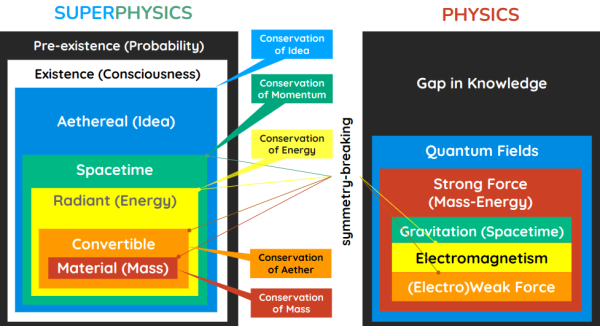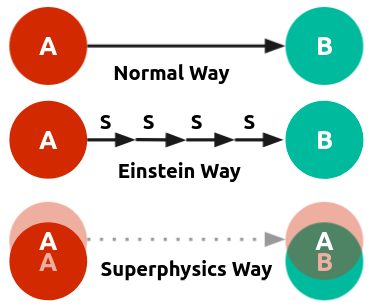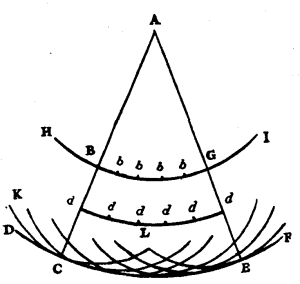Science Versus Scientism
During the few months that we’ve been pushing Cartesian-Spinozan Physics to replace that of Newton and Einstein, we noticed that the common pattern in:
- the believers in Newton was the need for objectivity and
- the believers in Einstein was the need for precision
But the big problem is that the universe is made up of 5 Elements.
- Objectivity is only true for matter (3rd Element to Descartes, Material Layer to Superphysics).
- Precision is true for electromagnetism (1st Element to Descartes, Radiant Layer to Superphysics) since it as the electroweak has the smallest particles as electrons and neutrinos.

The other Elements – spacetime and aether – are not objective nor precise. And so the requirements of science naturally keep out the complete knowledge of how the universe works.
Spacetime and the aether are not objective nor precise
Worse, the focus on objectivitiy, which is really a focus on crude matter, goes against the subtle nature of the abstract human mind (soul). Scientists end up using their knowledge to create nuclear bombs or hypersonic missles to destroy other humans more efficiently, just as Wall Street uses scientific models to amass more money, creating worse financial crises.
Science teaches the proper use of material things. When the development of civilization is utterly negligible and science gradually attains the apogee of development, science leads the way for destruction instead of doing any good to humanity. And so, the study and practice of science, though unavoidable, should not be given a higher place than civilization.
PR Sarkar
Civilization, Science and Spiritual Progress
Instead of demanding objectivity and precision, a superior requirement is for a system of reasoning to answer questions or solve problems about real phenomena conclusively.
A superior requirement is to answer questions about real phenomena conclusively
The answer could apply only to a single person who has a unique situation, and therefore be subjective. Or it could solve the problem in a general imprecise way.
The important thing is that the problem is solved conclusively, without creating new problems.*
*This requirement is most obvious in medicine.
Western medicine uses Western science and so it demands that a cure be objective and work for all people during clinical trials.
But the big problem is that diseases, just like prices, are relativistic.
- Some people tolerate disease better, others succumb to it easily.
- Likewise, some people come from wealthy families and have money to buy expensive things, others have less money.
So pharmaceuticals have to create medicines that work for all. This can only happen by making them really strong. But this also makes them more dangerous and expensive.
If the bacteria were a terrorist living in a residential area, then the medicine would be a large bomb applied on that area to guarantee the end of that terrorist. But it would also destroy many innocents.
The smartest solution would be a small bullet that hits only the terrorist. This would need a refined approach by knowing exactly:
- where he is
- what is his routine at specific times
Only then can the bullet be arranged as to hit him. This requires a lot of patience, observation, and analysis. More importantly, it needs a specialist who knows all these things.
This is what the paradigms of Chinese medicine, Ayurveda, Naturopathy, and Homeopathy do. These medical systems are not encouraged by society and so they get low quality specialists who make blunders and give those systems a bad name.
The Approach of Cartesian-Spinozan Physics
Cartesian-Spinozan Physics exactly goes for this approach.
It is very broad and explains all phenomena conclusively. It didn’t have math because it would sacrifice the big picture by limiting itself into numbers and crudifying itself into the lower Elements such as matter and electromagnetism.
A physics maxim could be illustrated intuitively and visually by lines and arrows.

Instead of math, it used geometry as shapes. The future generations could then improve on those shapes and derive the math from those shapes and patterns.
This is what Huygens did by improving the shapes done by Descartes.


But somehow the mathematicians like Newton won and imposed a system based on text and numbers for the same thing.
This required a system of arbitrary conventions such as the use of Greek letters. Notation replaced visualization.
This notation and deciphering process then became specialized knowledge, different from common and intuitive knowledge, making Physics out of reach to common people. This is something that a priest-caste would do for their own convenience and interest.
This is opposite of what enlightened people do. For example:
- Buddha taught in Pali which was the common language
- Japanese monk Kukai invented kana to make literacy within reach to the common people
We make the same innovations with our proposed qualimath which focuses on:
- qualities instead of quantities
- “deconstructed” notation
- the use of videos to visualize equations
Science and Scientism
To fully unlock the features of the universe, the limitations of crude, objective science has to be overcome.
The subjectivity and arbitrariness of Nature can be understood only through Metaphysics, since it is the cause of everything in Physics. This is proven by the maxim “mentality creates reality”.
It is an established maxim in metaphysics, that whatever the mind clearly conceives, includes the idea of possible existence, or in other words, nothing we imagine is absolutely impossible.
David Hume
A Treatise of Human Nature, Book 1, Part 2, Section 2
Both Science and Scientism are devoid of metaphysics which uses all 6 senses, as opposed to science which only uses 5*.
*The downgrade from 6 to 5 senses usually happens when a society becomes wealthy. The common pattern is that a society enters a golden age when 6-sense people emerge and lead or create new advanced philosophies. This then makes that society wealthy. The wealth then crudifies the people, downgrading them back to 5 senses.
The Romans got too downgraded that their empire collapsed and led to the dark ages. India and China too have downgraded but not have gone extinct.
The dark ages of India began with the Mughals and British. China’s dark ages began with their closing off to the outside world. This was copied by Japan until they reversed policy as the Meiji restoration.
The dominance of the limited 5 senses is seen in the demand for absolute objectivity as mentioned earlier.
This is admited by this article
But somehow the author weirdly flips things and sees:
- science as the one that asks questions (instead of the one imposing crude objectivity), and
- metaphysics as the one imposing a God’s eye view on science (as opposed to liberating science from objectivity without any Christian God).
The author’s logic is proof that somehow there is still an association between metaphysics and religion in the minds of Westerners. This is the fault by the Roman Catholic Church which integrated Aristotle’s system (including his false geocentric physics).
This is because Aristotle coined metaphysics. But since his metaphysics was appropriated by the Church then it became associated with religion.
Westerners have been indoctrinated into this confused mess and so they are unable to separate the inquisitive Greek metaphysics from the dogmatic Roman religion. It is merely a proof of how powerful the Roman empire was that its mental patterns still persist today.
The confusion between metaphysics and religion is a proof of how powerful the Roman empire was
The extinction of the Romans makes its way into the possible extinction of humans through nuclear war (quick extinction) or global warming (slow extinction) while the world sticks with Roman mentality, which most commonly infects Westerners.
But we as Asians can view things impartially and see where the mistakes are. Unlike the Romans who had zero metaphysics, Asians have lots of spirituality and so value harmony instead of dominance and wealth.
The Solution
The main problem is that science is pure objectiveness, but the universe is subjective and its core is actually paradoxical. This disconnect (called adharma in Hinduism) creates all the recurring problems.
Scientism enshrines science and therefore keeps those problems up without knowing it.
Superhysics solves this by adding the original Socratic metaphysics to science in order to upgrade it to 6 senses for the understanding of the subjectivity and arbitrary flow (Tao) of the universe.